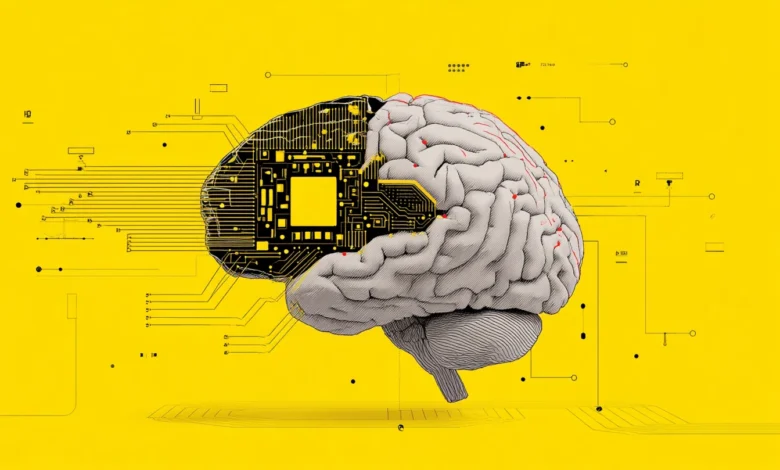CISOs Face the New Era of AI-Driven Security Threats

▼ Summary
– AI is being integrated into business processes faster than it is secured, creating vulnerabilities that attackers are exploiting.
– AI-driven attacks operate over 40 times faster than traditional methods, enabling breaches before defenders can respond.
– Many security operations centers use AI tools without custom rules or playbooks, leading to visibility gaps and increased risks.
– A recommended solution is an adoption-led control plane that provides secure access to approved AI tools while maintaining visibility and data protection.
– A three-part framework for secure AI includes protecting models and data, utilizing AI for defense, and governing AI with evolving regulations.
The rapid integration of artificial intelligence into business operations has outpaced the implementation of adequate security measures, leaving organizations vulnerable to a new generation of sophisticated threats. This widening gap presents a critical challenge for Chief Information Security Officers (CISOs), who must now defend against adversaries leveraging AI to execute attacks with unprecedented speed and precision.
Cybercriminals are harnessing AI to operate at a pace that human defenders simply cannot match. Phishing campaigns have become far more convincing, privilege escalation occurs in near real-time, and automated attack scripts can now adapt on the fly to evade detection. Recent research indicates that AI-driven attacks can advance more than forty times faster than conventional methods, enabling threat actors to complete a breach before security teams even receive their first alert.
Within many security operations centers, AI tools are being deployed hastily and without a coherent strategy. A significant 42% of SOCs admit to using machine learning solutions straight out of the box, lacking custom rules or proper integration into existing workflows. Few organizations have developed specific playbooks to counter emerging AI threats such as prompt injection or model poisoning. Compounding the issue, many teams possess limited visibility into how their AI systems function, creating dangerous blind spots that attackers are quick to exploit.
This lack of preparedness is especially problematic for smaller security teams operating with constrained resources. According to Rob T. Lee, Chief of Research and Chief AI Officer at SANS Institute, CISOs should prioritize investments that deliver both security and operational efficiency. He recommends adopting a controlled environment that allows employees to access approved AI tools through a protected interface, complete with built-in safeguards for access management, data protection, and activity monitoring. This approach not only enhances security but also encourages the legitimate use of AI across the organization.
Lee emphasizes that success should be measured through concrete outcomes, such as reduced unauthorized tool usage and increased adoption of sanctioned platforms, rather than abstract metrics. This practical focus helps security leaders demonstrate value while maintaining control over AI-related risks.
To assist organizations in bridging these security gaps, a three-part framework has been proposed: Protect AI, Utilize AI, and Govern AI.
The Protect AI component involves securing AI models, data, and infrastructure through robust access controls, encryption, rigorous testing, and continuous monitoring. It also addresses novel attack vectors like model poisoning, where training data is deliberately corrupted, and prompt injection attacks that manipulate AI systems into disclosing sensitive information or executing malicious commands.
Utilize AI focuses on empowering defenders with AI-enhanced capabilities. Security teams must integrate artificial intelligence into their detection and response workflows to keep pace with AI-augmented threats. When implemented thoughtfully, automation can alleviate analyst fatigue and accelerate decision-making, though it requires careful oversight to be effective.
Lee underscores the importance of automated defenses against AI-fueled phishing and voice impersonation attacks. Early detection systems, supported by AI-powered email and call screening, can filter out obvious scams, while SOAR and XDR playbooks should automatically dismiss low-confidence alerts. This allows analysts to concentrate on genuine threats, reducing alert fatigue and maximizing limited resources.
Identity protection remains another essential layer of defense. Implementing FIDO2/WebAuthn passkeys as a replacement for passwords and legacy multi-factor authentication can significantly reduce credential theft. Additionally, all sensitive requests should be verified through a secondary channel. Training programs should prioritize frontline staff in departments such as finance, HR, and patient services, as these individuals are most likely to be targeted by AI-generated social engineering attacks.
Regulatory pressure is also mounting as governments worldwide introduce new frameworks aimed at AI governance. Legislation such as the EU AI Act and the NIST AI Risk Management Framework are establishing stricter requirements for transparency and accountability. Organizations that fail to comply may face severe penalties, as demonstrated by a recent case in which a European firm was fined millions for being unable to provide adequate records of its AI systems and data sources following a security incident.
(Source: HelpNet Security)





